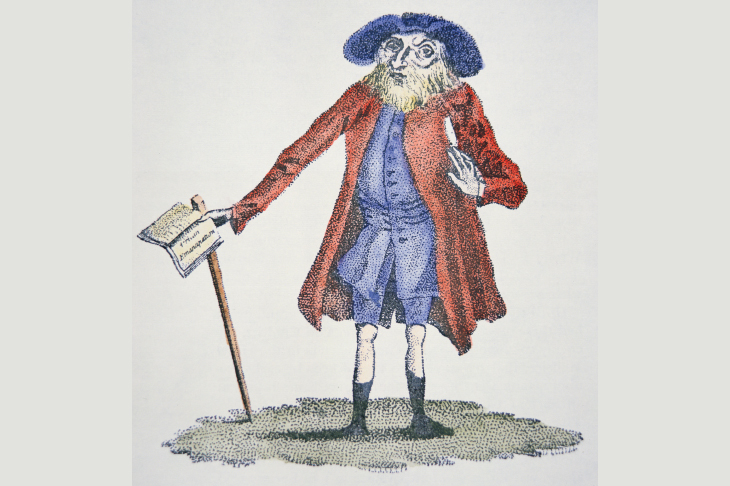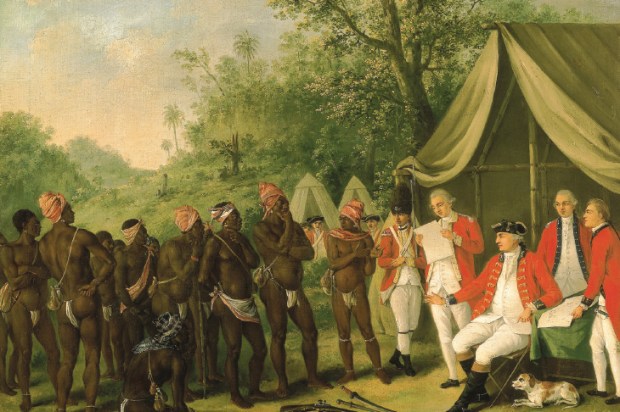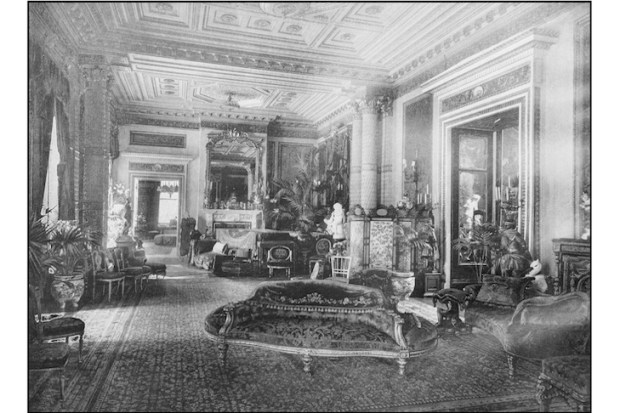It is a pretty safe bet that for every 1,000 people who know of William Wilberforce, no more than the odd one might have heard of Benjamin Lay. In many ways this is understandable enough, but if anyone deserves to muscle in on the mildly self-congratulatory and largely middle-class pantheon of Abolitionist Saints, it is the gloriously improbable and largely forgotten Quaker throwback and hero of Marcus Rediker’s generous and absorbing act — his own phrase — of ‘retrospective justice’.
There was probably only one period of English history in which Lay would have found himself at home, and that period, along with all the hopes and aspirations it had given birth to, had ended 20 years before he was born. The revolutionary wars of the mid-17th century had spawned an exhilarating range of religious and political radicalism, and it was among the visionaries, reformers, cranks, madmen and prophets of the New Model Army and Commonwealth — the Levellers and True Levellers, Diggers, Ranters, Seekers, Familists, Grindle-tonians, Chiliasts, Anabaptists, Quakers, Proud Quakers and all the rest of them — that Lay would have found his natural bedfellows.
Lay ought to have been there in the stocks with James Nayler — and there would certainly be any number of quietist Friends who would happily have driven a nail through his tongue — but it was his vocation instead to be a thorn in the increasingly soft flesh of his 18th-century brethren. In its earliest days Quakerism had been as radical as any of the sects, but by the time, in 1682, that Benjamin was born to second-generation Quaker parents in Essex, George Fox was well on his way to imposing the discipline of a church on the untrammelled spiritual individualism of his first adherents.
The ultimate logic of Protestantism, however, of Luther’s priesthood of all believers, is a Church of One, and in the four-foot high antinomian Benjamin Lay the meeting houses of Colchester and London had a brother whose ‘inward light’ was not for quenching. There is not very much known about his early years in England, but what we do know largely comes from the disciplinary records and correspondence of the various London and Colchester meeting houses as they endlessly, and hopelessly, tried to censure or expel their most violent and exhibitionist critic.
Lay was clearly an impossible creature, and they sound a mealy-mouthed, legalistic lot, and none of this would really warrant a book if Lay had stayed where he was born. As a young man, however, he had spent the best part of a decade at sea, and in 1732 he and his new wife — as small a figure as himself — quit England for good to raise Cain among the Quakers of Pennsylvania’s City of Brotherly Love.
In the years since Penn had founded the settlement, America’s Quakers had done particularly well for themselves, dominating the social, economic and political life of Philadelphia with a worldliness that had very little to do with the movement’s early history. It is hard to imagine that an unreconstructed old radical like Lay could ever have found a place there, but the abomination that really stuck in his craw and turned him from a fringe nuisance into America’s ‘first revolutionary abolitionist’ was the fact that more than half the city’s Quaker elite were slave owners.
Lay had seen the horrors of slavery some years before in Barbados and in the barely nascent abolitionist cause he had found his calling. He had long since honed his disruptive skills in his battles with the ‘covetous’ of Colchester, and over the next 25 years he waged a virtual one-man guerrilla campaign against the city’s Quaker ‘apostates’, terrorising them in their meeting houses and savaging them in print with a prophetic fury that harked back to the first heady days of the Commonwealth.
Marcus Rediker sees in him, though, as much a voice for our times as a throwback to an earlier age. As he grew older, living in a cave after the death of his wife, eating his vegetables and spinning his flax, Lay’s passionate fight against slavery broadened into a democratic and egalitarian opposition to exploitation — animal, human, environmental — in all its forms. In those concerns, and in his direct-action methods — he once spattered a Quaker meeting with a bladder of pig’s blood to register his protest — this may well be true, but he still remains most remarkable when seen in the context of his own world.
His was, it is worth remembering, the age of that rather more exquisite miniature, Alexander Pope, and if he seems a bridge between the God-infused political radicalism of the 17th century and the concerns of our own day that is a measure of just how remarkable he was. How effective his struggles were, how vital his role in stirring the Quaker conscience, is hard to say, but that is not the point. ‘In his time,’ Rediker concludes, ‘Benjamin may have been the most radical person on the planet. He helps us to understand what was thinkable and what was politically and morally possible in the first half of the 18th century — and what may be possible now.’ Nobly said.
Got something to add? Join the discussion and comment below.
Get 10 issues for just $10
Subscribe to The Spectator Australia today for the next 10 magazine issues, plus full online access, for just $10.
You might disagree with half of it, but you’ll enjoy reading all of it. Try your first month for free, then just $2 a week for the remainder of your first year.














Comments
Don't miss out
Join the conversation with other Spectator Australia readers. Subscribe to leave a comment.
SUBSCRIBEAlready a subscriber? Log in